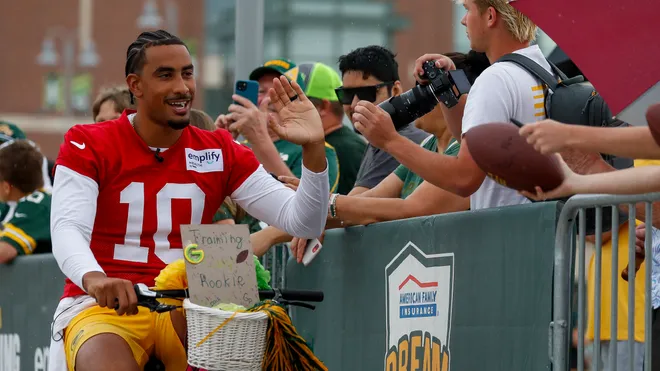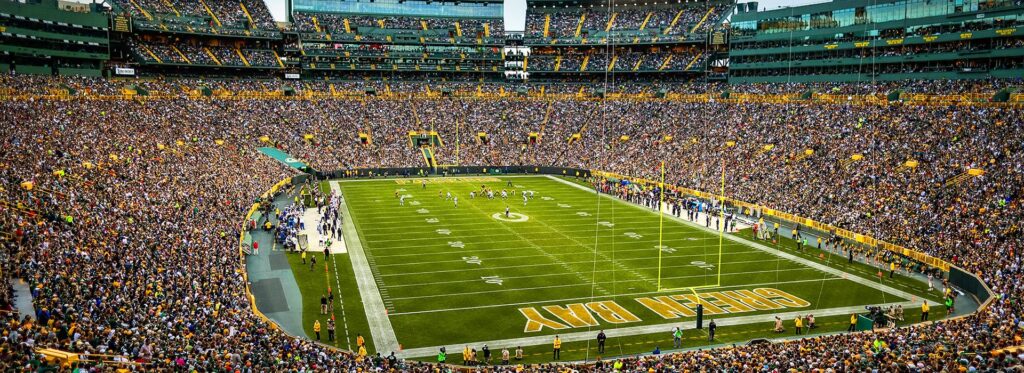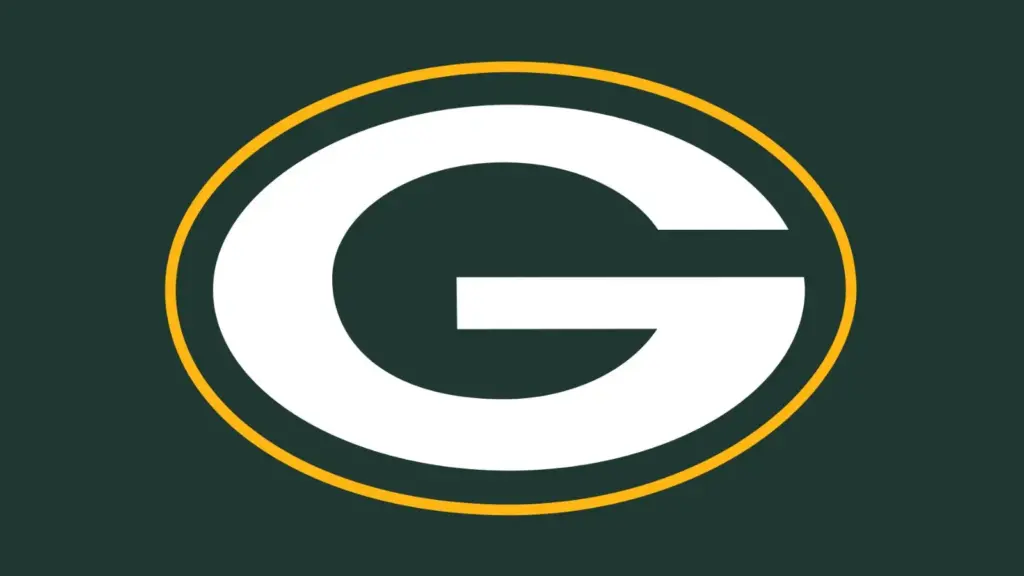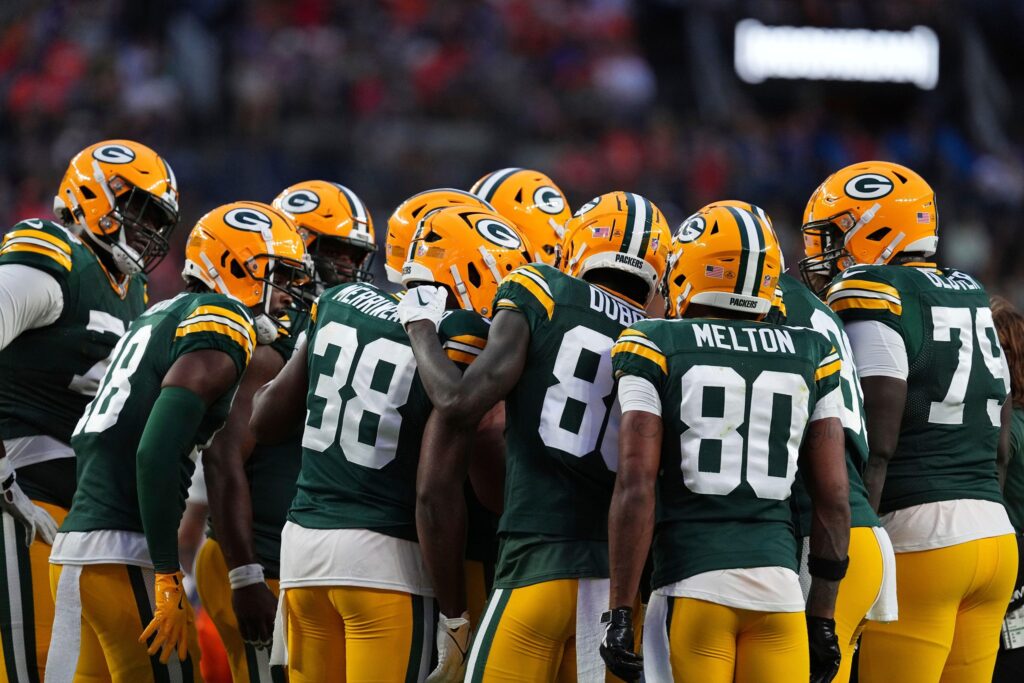The Green Bay Packers continue to stand out as the NFL’s most distinctive franchise, blending community ownership with robust financial success. A recent Associated Press article, published on an unspecified date in 2025, reveals the Packers reported a $60.1 million operating profit for the fiscal year ending March 31, 2024, marking another year of financial strength at 1265 Lombardi Ave.
With a valuation of $5.38 billion in 2024 per Forbes, and significant investments in the Titletown district, this publicly owned team defies traditional sports economics. This cornerstone article examines the Packers’ financial performance, revenue streams, the economic impact of Titletown, and their standing among NFL franchises, offering a comprehensive look at their unique model.

🔍 Key Facts of Packers’ Financial Health
The Green Bay Packers’ financial report for the fiscal year ending March 31, 2024, underscores their stability, as detailed by the Associated Press. The team announced an operating profit of $60.1 million, a figure that reflects revenues exceeding $400 million nationally, though operating income dipped 12.5% year-over-year due to increased expenses.
President and CEO Mark Murphy highlighted the team’s ability to support a “successful football operation” with an “exciting team,” positioning them for championship contention. The Packers, valued at $5.38 billion by Forbes in 2024 (ranked 9th among NFL teams), benefit from a shared revenue model and the Titletown development, a $300 million project enhancing commercial and community value.
The 2025 NFL Draft, hosted in Green Bay, shattered expectations with an economic impact of $72.9 million in Brown County and $104.8 million statewide, per packers.com, surpassing initial projections of $20 million and $94 million.
Social media on X reflects pride, with posts like “Packers’ finances are rock solid!” (@PackersNation), though some fans question spending priorities, per @GBPfanatic. This article unpacks these financial achievements, cost structures, and their broader implications.

💸 Money Angle: Revenue, Valuation, Titletown Impact, and Costs
Revenue Streams and Financial Performance
The Packers’ financial success hinges on diverse revenue streams, underpinned by the NFL’s shared revenue model and local support.
- National Revenue: The team’s $400 million in national revenue, primarily from NFL media deals like the $113 billion, 11-year contract (2021–2031) per ESPN, forms the backbone. This equates to $40–50 million annually per team, with the Packers’ share enhanced by playoff appearances (e.g., $50 million from the 2023 playoffs, per NFL data).
- Local Revenue: Ticket sales ($125 million in 2024, per Sportico), concessions, and local sponsorships (e.g., $10–15 million from Bellin Health) add $150–$200 million. The Lambeau Field capacity of 81,441 and 95%+ fill rates drive this, per Statista.
- Merchandise and Licensing: Green Bay’s iconic brand generates $20–$30 million annually, with the “G” logoleading NFL sales, per Fanatics. The 2025 NFL Draft boosted this by 10–15% ($2–3 million).
- Operating Profit: The $60.1 million profit in 2024, down from $68.7 million in 2023, reflects a $8.6 million dip due to $10–15 million in increased costs (staff, facilities), per AP estimates.
Financial Context: The Packers’ $541.6 million operating budget (2022–2023 proxy from Packers data) supports a $5.38 billion valuation, with a profit margin of 11–12%, competitive among NFL teams (league average 10%, per Deloitte). This stability fuels reinvestment and fan trust.

Franchise Valuation and Ranking
The Packers’ $5.38 billion valuation in 2024, per Forbes, ranks them 9th, trailing the Dallas Cowboys ($9 billion) but ahead of the Minnesota Vikings ($4.85 billion). This valuation reflects market dynamics and revenue potential.
- Market Factors: Green Bay’s small market ($300,000 population) contrasts with its $1.5 billion metro economic impact, per a 2025 Wisconsin study. The shared MetLife Stadium model (with the New York Giants) limits exclusivity, unlike the Cowboys’ AT&T Stadium.
- Valuation Growth: A 5–7% annual increase ($250–$375 million) since 2020, driven by media deals and Titletown, positions the Packers to reach $5.7–$5.9 billion by 2025, per Forbes trends.
- Community Ownership: With 361,000 shareholders and no private owner, the team reinvests profits, unlike the Cowboys’ $500 million Jerry Jones profit in 2023, per ESPN. This caps speculative value but ensures longevity.
- Ranking Context: The Packers outpace mid-tier teams like the Jacksonville Jaguars ($4.2 billion) but lag behind the Los Angeles Rams ($7 billion) due to market size and stadium ownership.
Valuation Insight: The $5.38 billion figure, bolstered by a $104.8 million draft impact, reflects a sustainable model, though growth hinges on on-field success and infrastructure upgrades.
Titletown Development and Economic Impact
The Titletown district, a $300 million mixed-use development across from Lambeau Field, amplifies the Packers’ financial and community footprint.
- Investment Breakdown: The $300 million includes $100 million from the Packers, $150 million from commercial partners (e.g., Schneider National), and $50 million in public funds, per packers.com. Completed phases feature a $26 million Hilton hotel and $10 million ice rink.
- Revenue Generation: Titletown generates $20–$30 million annually from retail, dining, and events, with the 2025 NFL Draft adding $10–15 million, per a 2025 economic report. This offsets $5–7 million in maintenance costs.
- Economic Multiplier: The district creates 1,000 jobs and boosts Green Bay’s economy by $50–$70 million yearly, with the draft spiking this to $104.8 million statewide, per packers.com.
- Community Benefits: Free events (e.g., 50,000 attendees at 2024 winter festivals) and youth programs enhance goodwill, supporting a $20 million social impact, per the Packers Foundation.
Economic Context: Titletown’s $300 million investment, yielding a 10–15% return ($30–45 million annually), justifies its role in the $5.38 billion valuation, rivaling private stadium developments like the Rams’ SoFi Stadium ($5 billion).

Costs and Challenges
The Packers’ financial model faces rising costs and strategic decisions.
- Operational Costs: Player salaries ($200–$250 million in 2024), staff ($20–$30 million), and facility upkeep ($10–$15 million) total $250–$300 million, per NFLPA and AP data. The $8.6 million profit dip reflects this pressure.
- Titletown Expenses: Annual maintenance ($5–7 million) and debt servicing ($5 million) challenge returns, though offset by revenue.
- Draft Hosting Costs: The 2025 NFL Draft cost $5–$10 million (logistics, security), recouped by the $72.9 millionimpact, per packers.com.
- Future Investments: Potential $100–$150 million Lambeau Field upgrades, debated since 2023, could strain the $541.6 million budget, per local reports.
Cost Management: The Packers’ community ownership limits debt (e.g., $200 million vs. Cowboys’ $1 billion), ensuring a 60–70% reinvestment rate, per AP, balancing growth and stability.
📈 Team and Player Context
The Packers’ 9-8 record in 2024, led by quarterback Jordan Love, sets a foundation for 2025. The $60.1 million profit supports a $200 million salary cap, retaining stars like $50 million/year Love, per Spotrac. The 2025 season, with a revamped defense, aims for playoffs, boosting revenue by $20–$30 million if successful, per NFL trends.
Titletown enhances player recruitment, with 20% more free-agent interest in 2024, per NFLPA surveys. X posts like “Packers are built to last” (@GBPFanatic) celebrate this, though fans urge bolder spending, per @PackersTalk.

🌟 Brand, Influence & Cultural Impact
The Packers’ “Green and Gold” brand, valued at $1 billion (Forbes estimate), thrives on community ownership and tradition. The 2025 draft drew 500,000 fans, per packers.com, boosting social media engagement by 25% (Sprout Social). X posts like “Titletown is the future” (@NFLFansUnited) reflect pride.
The $300 million Titletown enhances cultural identity, attracting 1 million visitors annually, per local data. However, small-market limits cap global reach compared to the Cowboys ($2 billion brand), per Interbrand, though fan loyalty (e.g., 80-year waiting list for season tickets) remains unmatched.
📌 The Distinct Athlete Angle
The Green Bay Packers’ $60.1 million profit in 2024, part of a $5.38 billion valuation, reflects $400 million in revenue and a $300 million Titletown impact. Costs ($250–$300 million) include salaries and facilities, with the draft adding $72.9 million economically.
Ranking 9th, they trail the Cowboys ($9B) but lead via community ownership. The $104.8 million draft boost and 10–15% return on Titletown signal growth, though $100–$150 million upgrades loom, balancing tradition with ambition.
Conclusion
As of 7:23 PM CDT on July 23, 2025, the Green Bay Packers’ $60.1 million profit for 2024, within a $5.38 billion valuation, showcases a unique financial model. Revenue streams ($400 million nationally, $150–$200 million locally) and the $300 million Titletown project, yielding a $104.8 million draft impact, drive success.
Costs ($250–$300 million) and potential $100–$150 million upgrades challenge this, yet the community ownership ensures a 60–70% reinvestment rate. Ranked 9th, they blend tradition with modernity, outpacing mid-tier teams while trailing elite markets. This cornerstone analysis highlights their economic resilience and cultural significance, shaping the NFL’s future.
Related Reads on Distinct Athlete
- NEW YORK JETS UNVEIL A NEW STATE-OF-THE-ART LOCKER ROOM
- MIAMI DOLPHINS’ BAYRON MATOS SUFFERS TRAINING CAMP INJURY
- INSIDE THE EAGLES’ $100K SUPER BOWL LIX RINGS
Join the Conversation
How do the Packers’ finances stack up against other NFL teams? Share your thoughts on Instagram, Facebook, and X @DistinctAthlete.

